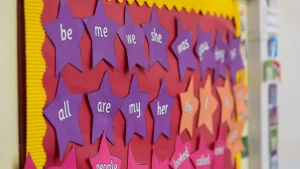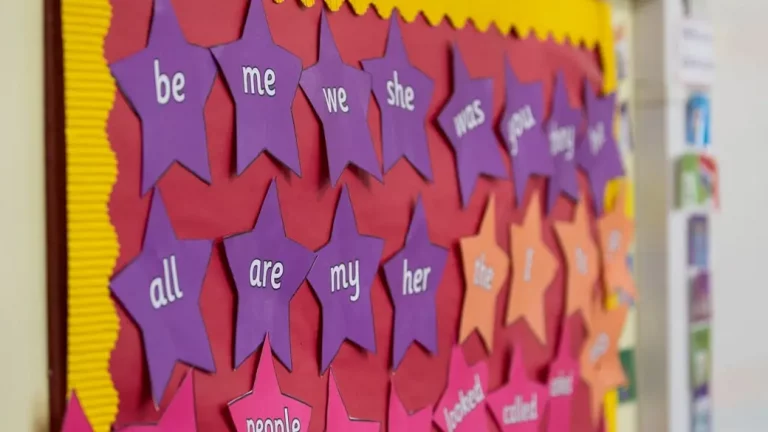How to support students with Complex post-traumatic stress disorder (CPTSD)
In this blog, Emily, a qualified SEN teacher, explores Complex Post-Traumatic Stress Disorder. This article is aimed to help teachers of children with CPTSD and contains advice for parents and carers seeking support from school for their child.
What is CPTSD?
Complex post-traumatic stress disorder (CPTSD) is a condition where you experience some or all of the symptoms of Post Traumatic Stress Disorder (PTSD) along with some additional symptoms.
What is the difference between CPTSD and PTSD?
PTSD is where someone has experienced one traumatic event or a series in a short space of time (think a couple of days or one week). CPTSD is where someone is exposed to different levels of trauma on a regular basis – often years at a time – and subconsciously builds a survival immunity towards them. CPTSD will then present itself in a variety of different ways.
Common symptoms of CPTSD
These can be split into three different groups;
- Emotion regulation symptoms
- Being ‘sensitive’, or your feelings being easily hurt
- Difficulty experiencing positive emotions – for example, it might be hard for you to feel happy or loving towards the people close to you
- Feeling the world is unreal as if you’re living in a dream
- Often feeling angry or irritable
- Deliberately trying to hurt yourself or put yourself in dangerous situations
- Negative sense of self
- Feeling worthless or defeated
- Thinking you’re ‘bad’, or that there’s something wrong with you
- Blaming yourself for the traumatic event(s) or consequences of the traumatic event(s)
- Relationship disturbance symptoms
- Feeling distant or cut off from other people
- Feeling isolated from other people
- Struggling to maintain relationships with other people
Where and how do we see CPTSD?
As educators, we see CPSTD predominantly in Looked After Children (LAC) or Previously Looked After Children (PLAC). However, when it raises its head on other students, it is a good indicator to us that there is something going on in the background, sometimes without parents’ knowledge.
In the learning environment, it can present itself in classroom violence, hyperactive behaviour, selective mutism, fight or flight, refusal, lack of engagement as well as the three main groups above. This can often lead to a multitude of misdiagnoses such as Autism and ADHD – however, it tends to be these diagnoses’ that reveal CPSTD’s true identity.
What can my school and I do?
The first and most important thing is to ensure your child has an EHCP (Education and Health Care Plan). This will ensure your child is protected from expulsion, get the school the funding they need to support (sensory, TA, ELSA, CPD training) and also will hold each education provider accountable for your child’s progression until they are twenty-five. This means that if your child has issues in secondary, sixth form, University, apprenticeship ect the education provider MUST LEGALLY provide any support your child needs to progress (and ideally complete/succeed). It also means that if it is decided your child would do better in an SEN setting, the current school must assist with this and provide recommendations. Ensure you push for this as councils are reluctant to provide EHCP and it is estimated that 50% of our children require one but at present only 10% have one.
Ensure you have a positive relationship with your SENDCo. If you don’t feel they are doing enough, you must speak to your head. EHCP and SEN recognition can take up to five years on NHS so it is important things begin to move with speed. You can absolutely go private, but remember the NHS and state schools cannot officially recognise private diagnosis. It is, however, the best and quickest way to gather evidence in order to submit for an EHCP and/or diagnosis and treatment on the NHS much quicker.
Teaching a child with CPTSD
These strategies can also be done at home if you are homeschooling, trying to get homework done or just trying to support your child.
Provide a safe environment for the child.
Providing a safe environment for students that enhances learning and reduces stress will really help. Research suggests brain plasticity (the brain’s ability to grow and adapt in response to external stimuli) can be enhanced by high-quality teaching. The average teacher works with students until they get it right. Expert teachers work with students until they can’t get it wrong. Ensure your child’s teacher is warm and supportive to your child and greets them directly and takes time for them separately. Ensure there is regular contact and ‘check ins’ so the child knows their teacher is reliable and safe. Allow your child to see you also have a warm and friendly relationship with their teacher. Even if you don’t like them!
Create motivational support systems
Understand the child’s motivation and their ability to build positive relationships are vital to success and positive experience. Align teaching with the child’s interests and learning styles. Positive praise goes a lot further than negative consequences. If the child is older, ask for their input.
Involved parents
Parents can promote brain-based learning by providing proper nutrition, exercise and enrichment activities for their children. These are things that can be reviewed through classroom newsletters and parent engagement meetings. Teachers must remember that parents of children with CPTSD are exhausted and isolated. Parents, try and remember that teachers are not trained how to handle CPTSD in the classroom. It must be a joint effort. Both may feel they are inadequate to help manage the child’s behaviour. Children who are stressed likely have parents who are stressed and students who are stressed tend to be so if their teacher presents this attitude. Make sure you communicate with them regularly and reinforce they are a partner in their child’s learning.
Home visits are an option but ideally, school and home should be kept separate unless the child has made good progress in cognitive therapy and are in a good place – and are happy with it.
Building relationships
Find time to meet with each child every day. Even meeting students at the door on their way into your classroom provides the opportunity to make a connection. This may require time during lunch, recess or after school. Students don’t perform for teachers they don’t like – same with parents. Neither of you has to be the child’s friend, but using Non-Violent Resistance (NVR) provides control in a warmer way. Many studies show the correlation between student/teacher relationships and a reduction in stress and disciplinary problems.
Incorporate movement in your classroom
Today’s children are getting less outdoor play and more screen time. And the pandemic didn’t help this. Build in some mind-body activities into the daily routine and provide opportunities for teaching empathy through role-playing. Provide opportunities for students to stand, stretch and move. We cannot expect children to sit for unlimited hours on the rug or at their tables doing work. We do need them to feel physically and emotionally regulated so they are able to attend to the lessons we’re teaching. Weight lifting has been proven to really help steady the mind – incorporate this with a medicine ball, furniture moving ect.
Shift your instruction
Many schools don’t offer ‘hands on’ learning opportunities. Provide opportunities to build on student strengths and promote positive behaviour outcomes in class. Make sure your instruction is differentiated according to the student learning style and interest. Provide an opportunity for assignments to be chunked and student-selected. Give choices when possible.
Practice self-care
Take good care of yourself. Find healthy ways to manage your stress, both during the day and at home. Secondary trauma is real and must be acknowledged. If you find you are taking on your student’s (and child’s) stress, make sure you are talking to a trained professional or colleague. Include mindfulness activities in your classroom instruction and daily life.
Understand the relationship between emotions and behaviours
Recognise you can change and influence a child’s emotional state. You are the weather in your classroom. Pay attention to possible triggers that indicate emotions are escalating and engage them before a meltdown occurs. Provide opportunities for students to ask for a break. Reflect. We all make mistakes and each child is different – what works for one may not for the other. Don’t be afraid to admit something didn’t work. Don’t be afraid to talk about these with your child so that you can learn and grow together.



Start the discussion!